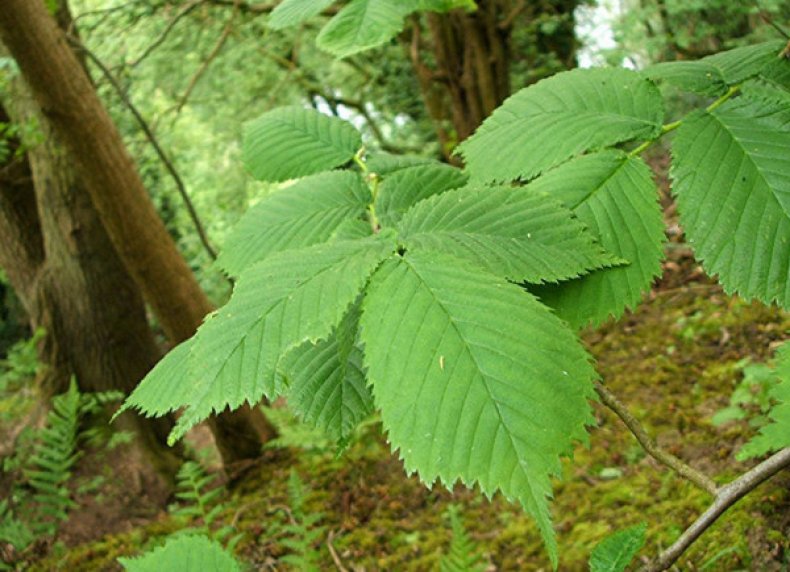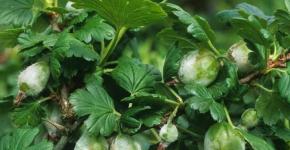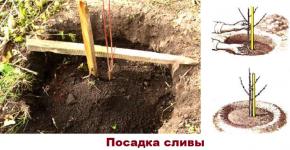Common types of elm
Elm, or elm, is a large deciduous tree with a dense crown. It looks beautiful, gives good shade and lends itself easily, therefore it is an active participant in the landscaping of cities and villages. It can be found on the streets, in parks, along roads and in forest plantations. The name "elm" originates from the ancient Celts, who called this tree "elm". The Russian name "elm" comes from the word "knit", since earlier it was used to knit sledges, rims and other products. Some of its species are called elm, birch bark, elm, elmovik.
hornbeam

This type of elm (pictured is a tree and leaves) is found in Europe, Central Asia, North Africa, and the Caucasus. deciduous tree that loves well-lit places, although it grows in the shade. The maximum height is 20-25 m, and the crown diameter is 10 m.
There are cork growths on dark brown branches. The leaves are large, pointed, smooth above and hairy below. The foliage is dark green in summer and bright yellow in autumn. Small flowers, collected in bunches, bloom until the leaves appear. Nutty fruits inside a membranous lionfish.
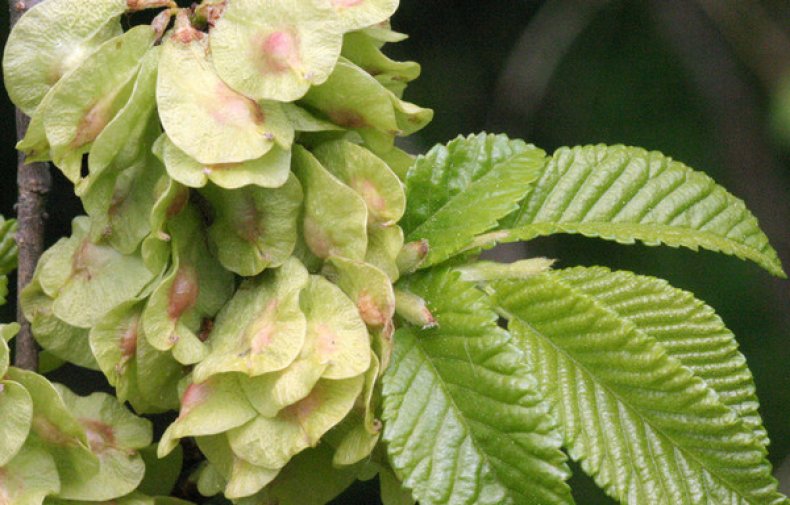
It tolerates cold winters and drought well. In favorable conditions can live 300 years. The hornbeam elm is good for health. It has diuretic, antimicrobial, diuretic and astringent properties. The bark inhibits the absorption of cholesterol. A decoction of it treats burns and skin diseases.
Smooth

The smooth elm is also called the common elm or large-leaved elm. Grows throughout Europe. His height - 25 m (sometimes 40 m), wide crown diameter - 10-20 m. The tree trunk is straight and thick, up to 1.5 m in diameter. The bark of young shoots is smooth, in adults it is rough, thick and peels off in thin plates. The leaves are quite large (12 cm), ovate, pointed, dark green above and light green below.
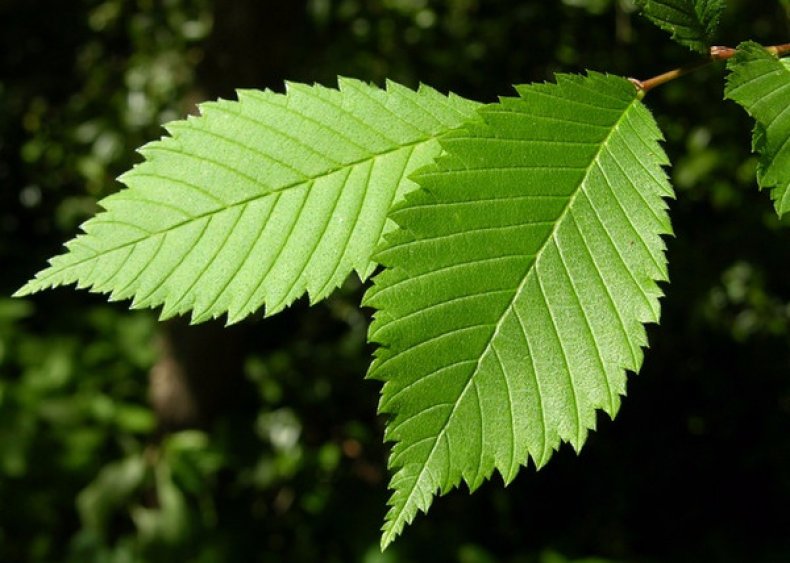
In autumn, the foliage turns brownish-purple. The flowers are small, brown with purple stamens. The fruit is a round lionfish with cilia along the edges.
Did you know? Elm wood does not rot in water, so in the Middle Ages in Europe, water pipes were made from its trunks. The pillars of the first London Bridge were also made from this tree.
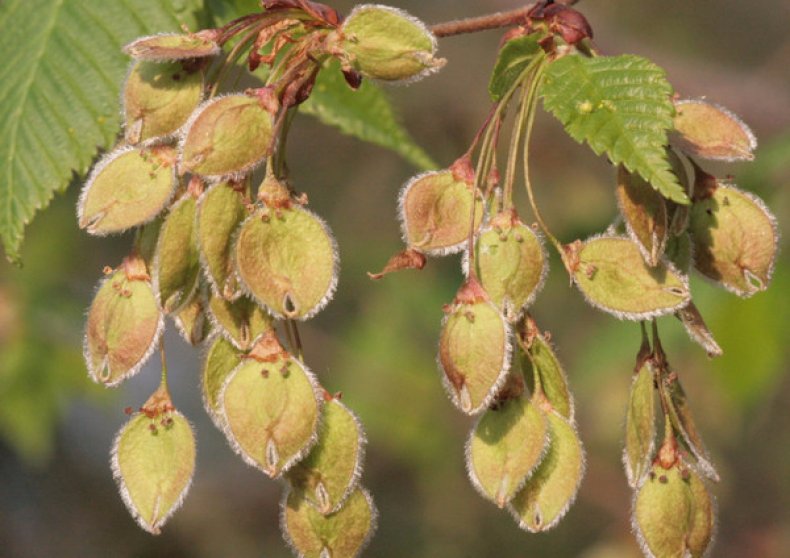 The smooth elm has a powerful root system. Perennial trees form a kind of support: board-like roots 30-50 cm high at the base of the trunk. Grows fast and lives 200-300 years(sometimes 400 years). Drought tolerant but loves moist soil. Easily tolerates short-term flooding.
The smooth elm has a powerful root system. Perennial trees form a kind of support: board-like roots 30-50 cm high at the base of the trunk. Grows fast and lives 200-300 years(sometimes 400 years). Drought tolerant but loves moist soil. Easily tolerates short-term flooding.
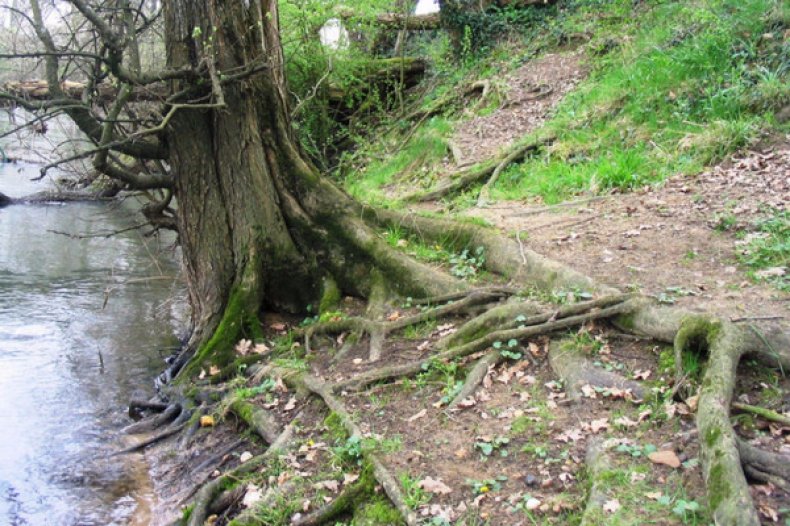
The wood of the large-leaved elm is dense, strong and easy to process. Furniture, rifle butts and other products are made from it. Previously, smooth elm bark was used for tanning leather, and bast for weaving ropes, mats and making washcloths. Useful substances that smooth elm contains give it healing properties: anti-inflammatory, antibacterial, astringent and diuretic.
Important! In cities, the common elm is indispensable, because more dust lingers on its leaves than on the leaves of other urban trees. It is planted to protect and strengthen beams and ravines.
Androsov
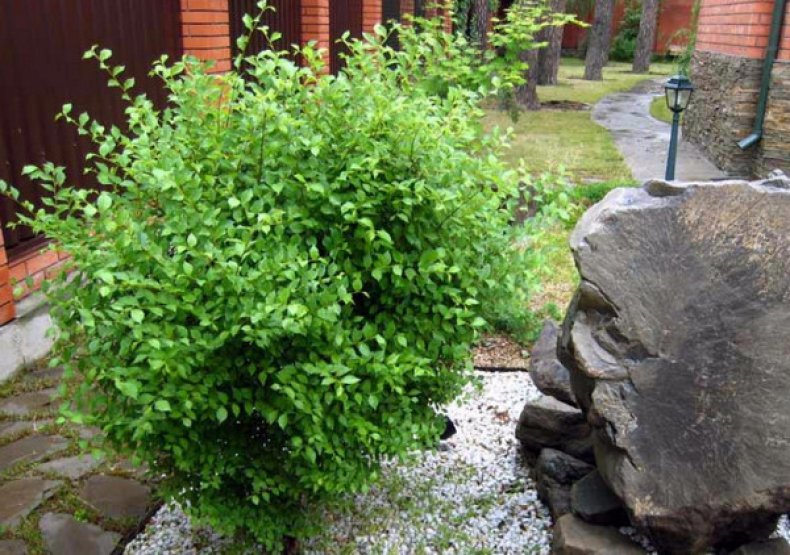
This type of elm does not occur in nature. It is artificially bred and is a hybrid of the squat and dense elms. The height of an adult tree is 20 m. Its crown has the shape of a tent and gives a dense shadow. The bark is grey. Leaves ovate, pointed.
Grows in moderately moist soil, easily withstands drought. The ability to produce side shoots makes the tree a good dust collector. Therefore, it is actively used for urban plantings. The plant is easy to shape and looks very beautiful, which made it popular in.
Thick
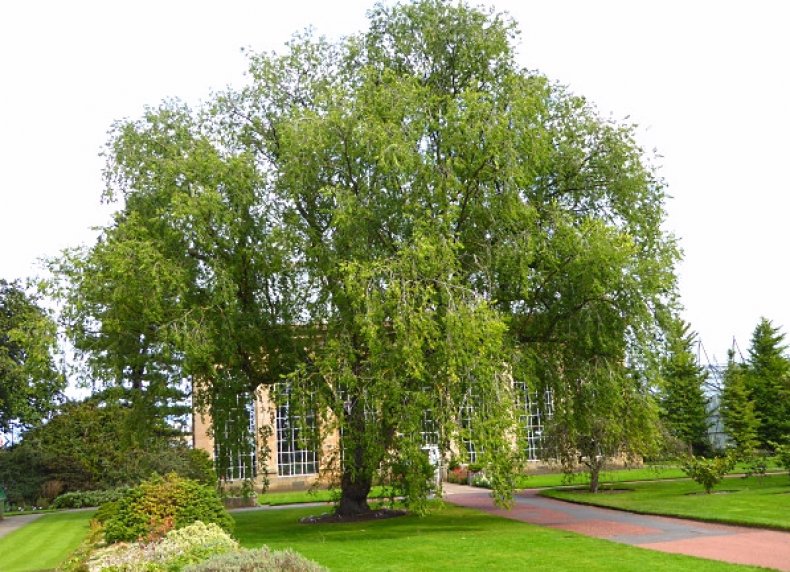
Rarely found in the wild. Grows in Central Asia. This tall tree grows up to 30 m. It has a wide pyramidal crown, which gives a dense shade. The bark on young branches is yellow-brown or gray, on old branches it is dark. The leaves are small, 5-7 cm long, leathery, ovate.
Dense elm is an unpretentious plant, frost-resistant, easily tolerates drought, although it loves moist soil. Gas resistance helps him feel great in urban smog.
vane
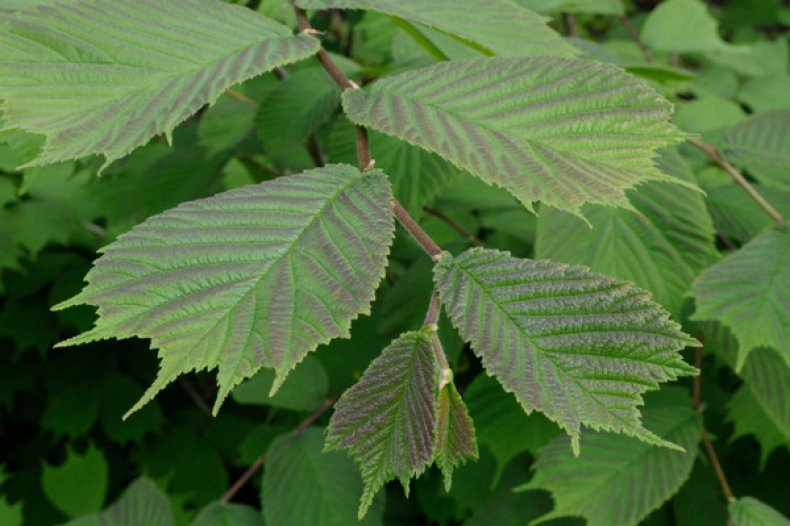
Other names are cut elm, or mountain elm. Distributed in East Asia, the Far East, Japan and China. Grows in deciduous and mixed forests. It can be found in mountain forests at an altitude of 700-2200 m above sea level. Tree growth - 27 m.
The color of the bark is gray and gray-brown. The shape of the crown is wide, cylindrical, rounded. The leaves are large, pointed above, sometimes with 3-5 pointed lobes. The plant tolerates shade, frost, strong winds and urban smoke well.
Pinnately branched
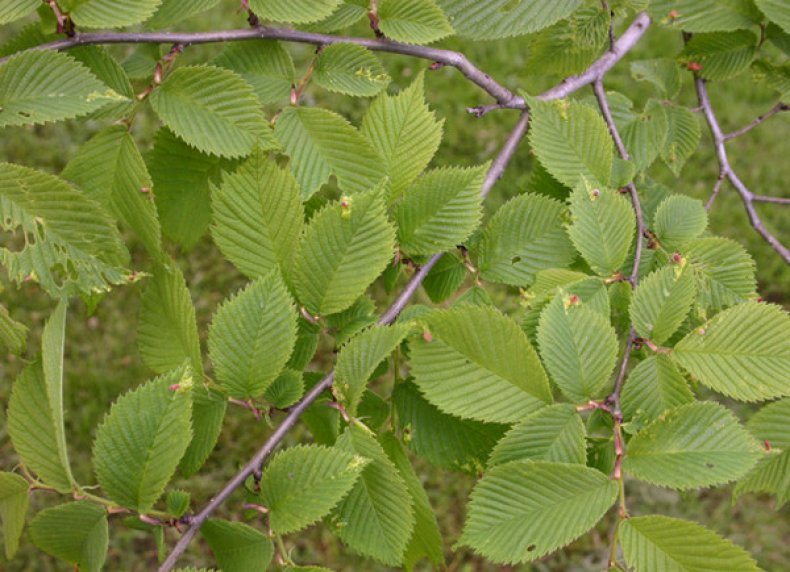
The second name is pinnately branched elm. It occurs naturally in Kazakhstan, the Far East, Central and East Asia. Grows on mountain slopes, pebbles, sands. Likes a lot of sun. Can live over 100 years. Height - 15-25 m. The crown is spreading, but does not give a shadow.
Small leaves are arranged in 2 rows and give the impression of large pinnate leaves, which gave the species its name. The plant is winter-hardy, freely drought tolerant and adaptable to any soil. It grows rapidly, but reaches its maximum growth only in its natural environment: in the south, on moist soils. Easily tolerates urban conditions - asphalt, dust, smog. It lends itself well to pruning and is popular in park construction.
David
Elm David is a shrub or tree that is 15 m high. The leaves are sharp, ovate, 10 cm long and 5 cm wide. The fruit is a yellow-brown lionfish. A well-known variety is the Japanese elm. It is popular in Russia, Mongolia, China, Japan and the Korean Peninsula.
Did you know? The long-lived elm, which is more than 800 years old, grows in Korea.
Small
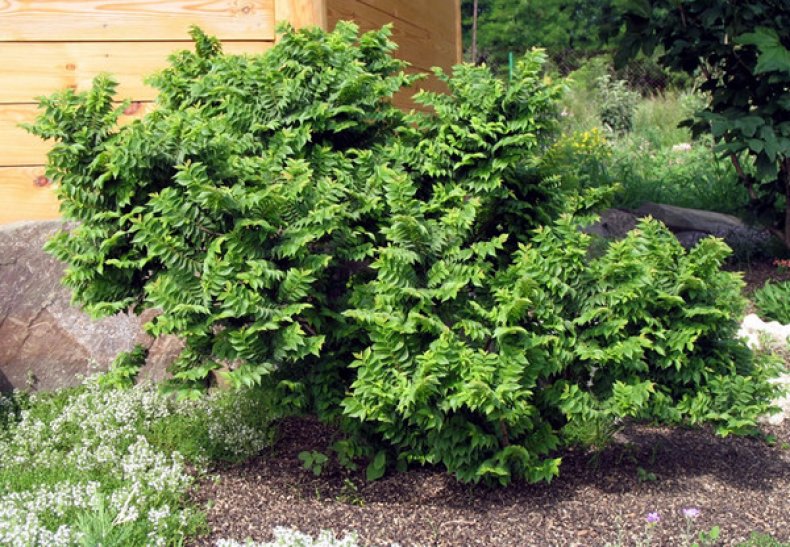
This species has many names - elm, birch bark, karaich, cork elm, red elm, field elm (tree in the photo). Distribution area: Ukraine, Russia, Asia Minor, Western Europe. It lives in broad-leaved and mixed forests, on river banks and high in the mountains.
The height of the tree ranges from 10 to 30 m. The crown is low. The leaves are oblong, obovate. Life expectancy up to 400 years. Karagach loves places lit by the sun, easily tolerates drought, but not frost. Distinctive feature - the tree forms a wide network of superficial roots.
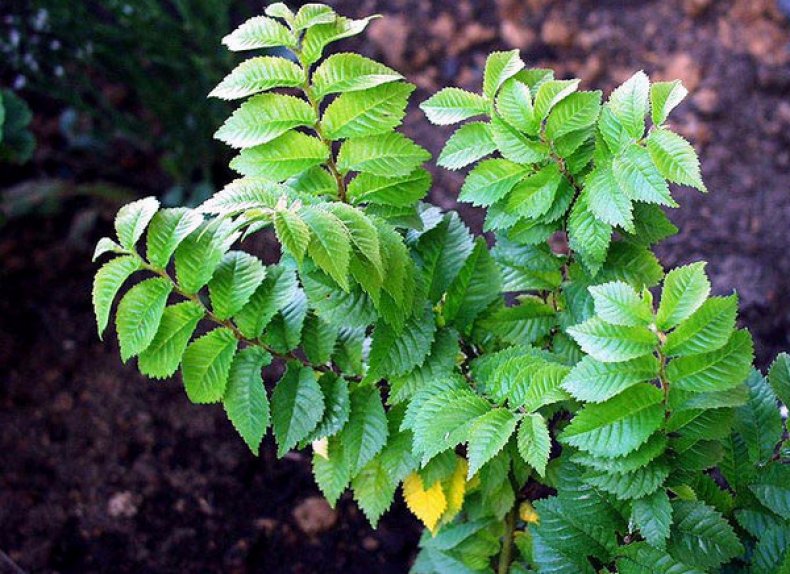
Thus, the topsoil is strengthened and reduced risk of erosion. Therefore, field elm is often used not only for landscaping cities, but also for field-protective forest plantations. Cork growths are often found on the branches, which increases the value of wood as a building material.
large-fruited
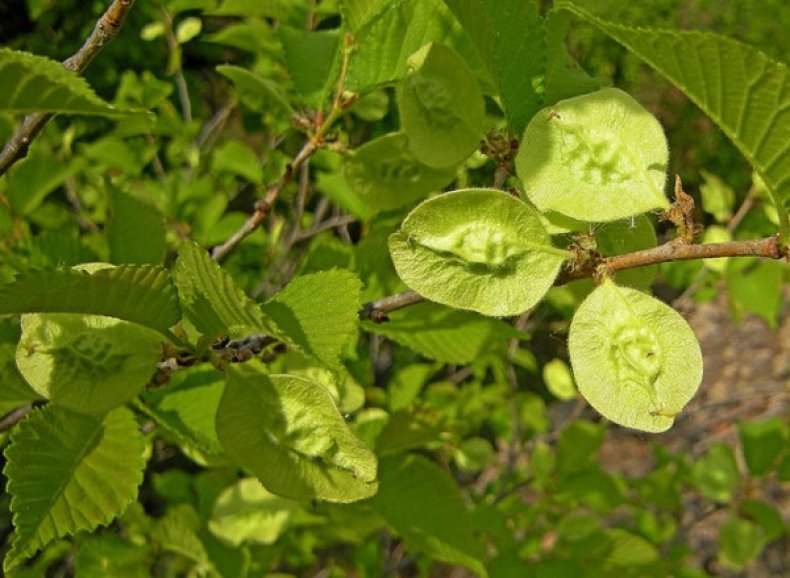
Ilm large-fruited lives in the East of Russia, in Mongolia, China and on the Korean Peninsula. It usually grows in river valleys, on wooded and rocky slopes. Is it a shrub or small tree whose maximum height is 11 m, with a large spreading crown. The bark is gray, brown or yellowish. The leaves are large, shiny, rough above and smooth below.
The name of the tree is due to its fruits, large hairy lionfish that adorn it. A very thermophilic plant. This type of elm differs from its relatives in its extreme resistance to drought. Therefore, it is actively used to fix the soil of quarries, embankments and rocky slopes.
Rough
